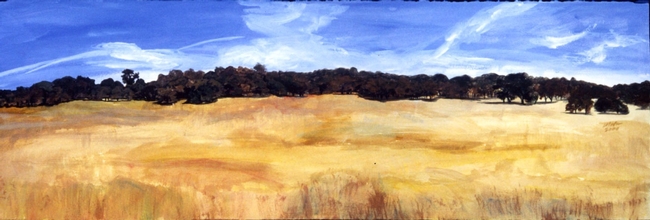Oaks and Oak Woodlands Explained
“Natural History of the Central Coast Bioregion” (adapted from Gregory Ira's announcement: https://ucanr.edu/blogs/blogcore/postdetail.cfm?postnum=31003) The publication's lead author, Bill Tietje (Environmental Science, Policy, and Management, University of California, Berkeley), with co-authors William Preston (Geographer Emeritus, Cal Poly, San Luis Obispo) and Anne Polyakov (University of California, Berkeley; currently a Masters Student, University of Washington), created a highly readable and engaging description of the Central Coast Bioregion. “We strived to write in everyday English and create a scientifically accurate and engaging presentation.” The authors succeeded on both counts by use of plain language, common plant and animal names, and short paragraphs supported with over 65 high-quality photographs, four maps, two diagrams, ten vignettes, and 70 references for further reading.
The Central Coast Bioregion, an area between the Pacific Ocean and the San Joaquin Valley, and extending from Monterrey south to Santa Barbara, is home to wildly popular and lesser known destinations. Well known areas include the Big Sur Coast, the estuaries at Elkhorn Slough and Morro Bay, and Monterrey Bay Aquarium. Some of the hidden gems are Pinnacles National Park, Santa Barbara Botanic Garden, and the Gardens of the La Purisima Mission. Together, the authors describe the origins and present composition of the region's environments: “Across the region's 15,000 square miles, physical, and biological processes, combined with time and human actions, have resulted in a broad range of ecosystems, each harboring distinct assemblages of plants and animals.” The publication uses engaging vignettes to highlight local conservationists, regional wildlife, historical and contemporary restoration efforts, and interesting places to explore. It begins with a brief history of the region, providing context to descriptions of subsequent environmental and land-use changes, a reminder to readers that while the future of the central coast is uncertain it will be shaped by our actions. You can find the publication at:https://anrcatalog.ucanr.edu/pdf/8597.pdf
Sharing Oak Woodland Research through a Popular Website (adapted from Devii Rao, Bill Tietje,Luke Macaulay, and Judi Young) Since its creation in 1995, the University of California Oak Woodland Management website has been a valuable educational resource. Based on Google Analytics data from 2011 to 2017, the website receives an average of 45,000 users annually. It is a repository of nearly 30 years of research and outreach data on the ecology, management, and conservation of California's 8 million acres of oak woodlands.
Recent staff retirements and changes in website standards created a need for an update and redesign. To accomplish this, the University of California Cooperative Extension received a Renewable Resources Extension Act Capacity Grant that allowed us to reformat the website for mobile devices; make the website more functional and visually appealing; add some of the latest research; and promote the website to groups who have not historically used it, in particular, the ranching community.
To increase user friendliness, we developed links at the top of the home page for the three primary target audiences: homeowners, land-use planners, and ranchers. On the home page, we also highlighted five topics that receive the most hits: species identification and ecology; oak regeneration and restoration; economic and ecological values of woodland stands; threats to oak woodlands; and woodland wildlife. The new website, now called UC Oaks, went live in June of 2020.
The new flexible website design will allow us to continuously meet the needs of our clientele. With its new look and expanded reach, we hope that the website will be a one-stop-shop for everything people need to know about oak woodland conservation and management. https://oaks.cnr.berkeley.edu/
